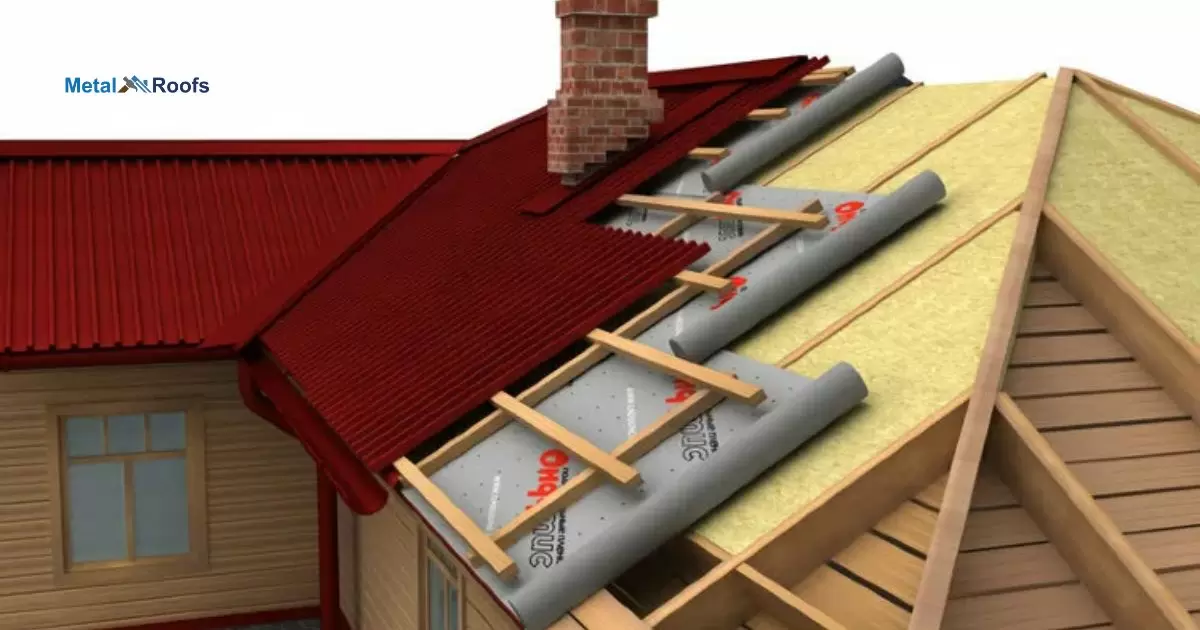Metal roofs can amplify sounds from rain, hail or other impacts. Sound-dampening solutions help reduce this noise. Options include specialized underlayment materials, insulation, and attic batt installation.
Are the sounds of rain or hail pelting your metal roof driving you crazy? Metal Roof Sound Dampening could be the solution you need. While metal roofs offer durability, the amplified noises can be a major downside. Discover innovative techniques to soften those harsh impact sounds.
While metal roofs offer excellent durability, the amplified sounds from rain, hail, and other impacts can be a major drawback. However, don’t let metal roof thermal expansion noise deter you from enjoying the benefits of this roofing option. Sound dampening solutions exist to significantly reduce those disruptive clamours.
Key Takeaways
- Metal roof sound-dampening solutions effectively reduce noise disturbances.
- Techniques such as sound-deadening paint and insulation improve comfort indoors.
- Enhancing tranquillity, these methods create a quieter living environment for homeowners.
- Addressing noise from rain or hail, metal roofs become more enjoyable spaces.
- Consider implementing sound-dampening solutions for a peaceful home ambience.
Fasteners and Panel Installation
| Aspect | Description |
| Fasteners | Secure metal panels with appropriate screws or nails |
| Panel Installation | Ensure proper alignment and overlap for a tight seal |
| Sealing | Apply sealant to prevent water infiltration |
| Fastening Techniques | Consider advanced methods like standing seam systems |
| Professional Assistance | Seek help from experts for complex installations |
Fasteners play a crucial role in metal roof installation. They secure panels tightly, preventing unnecessary noise. Proper installation ensures minimal vibration, reducing sound transmission. High-quality fasteners are essential for effective sound dampening.
Panel installation influences sound-dampening effectiveness. Correctly fitted panels reduce gaps, limiting sound escape. Professionals ensure precise alignment during installation, enhancing soundproofing. Careful attention to fasteners and panel placement significantly reduces roof noise.
Roof Underlayment
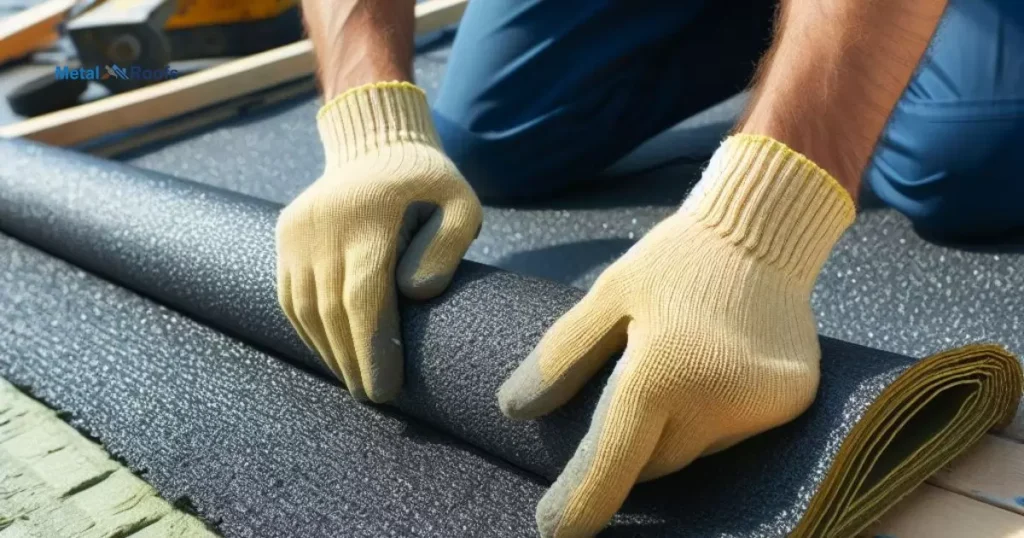
Roof underlayment is a crucial layer beneath the metal roofing. It acts as a barrier, preventing water infiltration and reducing noise transmission. Made of materials like felt or synthetic materials, it provides an additional sound-dampening effect to the metal roof.
Underlayment enhances the overall performance and lifespan of the roofing system, ensuring a quieter indoor environment and protection against harsh weather conditions. Roof underlayment serves as a cushioning layer, minimizing the impact of foot traffic and hail on the metal roof.
It adds an extra level of insulation, helping to regulate indoor temperatures and reduce energy costs. Proper installation of underlayment is essential for maximizing the sound-dampening properties of the metal roof.
Sound Deadening Paint
Sound-deadening paint is a cost-effective solution for reducing noise in your home. It works by adding a layer of sound-absorbing material to surfaces. When applied to metal roofs, this paint helps dampen noise caused by rain, hail, or other external factors, creating a quieter indoor environment.
This type of paint is easy to apply and can be used on various surfaces, including metal roofs. It acts as a barrier to sound waves, absorbing them and reducing their impact. Sound-deadening paint can also provide thermal insulation, helping to regulate indoor temperatures and improve energy efficiency.
Insulation of the Ceiling
Insulating the ceiling is crucial for reducing noise in a metal roof. Use fibreglass or mineral wool for effective sound dampening. Ensure proper installation to cover all gaps and cracks. This insulation traps sound waves, preventing them from entering or exiting the building.
A well-insulated ceiling creates a quieter and more comfortable indoor environment, enhancing overall quality of life. Consider installing acoustic panels or tiles on the ceiling for added sound absorption. These panels come in various designs and materials to suit different aesthetics.
Insulation of the Walls
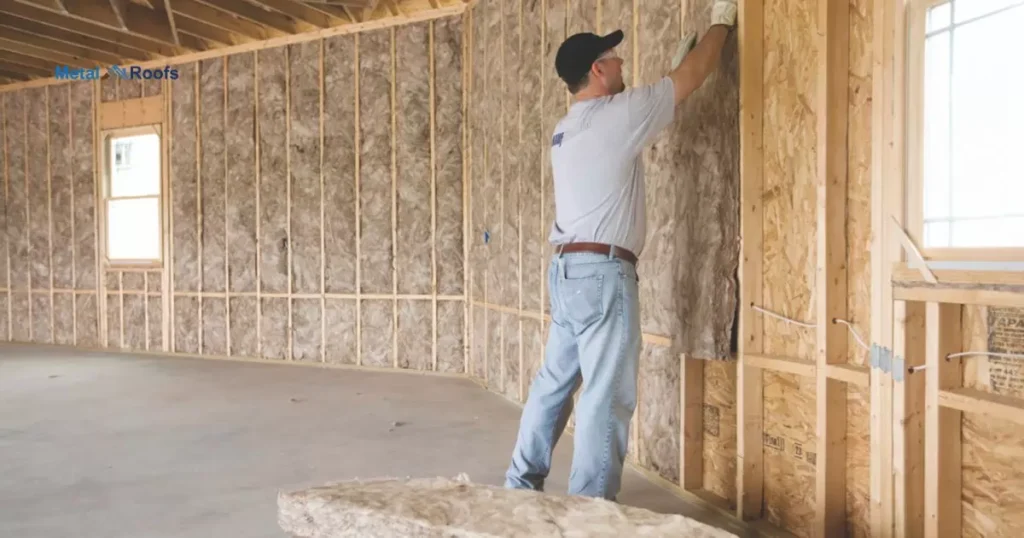
When it comes to sound dampening in metal roofs, addressing the insulation of the walls is crucial. Adding insulation to the walls helps prevent sound from reverberating through the structure.
This insulation serves as a barrier, absorbing and minimizing the transmission of sound waves, thus reducing noise levels inside the building. Insulating the walls effectively complements the sound-dampening efforts for metal roofs.
Sealing any gaps or cracks, it prevents sound leakage and enhances the overall acoustical performance of the building. This step significantly contributes to creating a quieter and more comfortable indoor environment.
Correctly Installing the Panels
Installing metal roof panels properly is key to effective sound dampening. Start by ensuring the panels fit snugly together without gaps. Use appropriate fasteners to secure the panels firmly to the roof deck. Overlapping panels tightly helps prevent sound leakage.
This method creates a barrier against external noise, enhancing the overall sound-dampening properties of the metal roof. Proper installation ensures maximum effectiveness in reducing sound transmission through the roof structure.
Solid Sheathing
Solid sheathing is crucial for reducing noise on a metal roof. It acts as a barrier, absorbing sound vibrations. Adding a layer of solid sheathing under the metal panels, noise is significantly reduced, creating a quieter environment.
Solid sheathing materials like plywood or OSB enhance the structural integrity of the roof while dampening sound. They provide a solid foundation for the metal panels, reducing the transmission of noise into the building.
Quality Fasteners
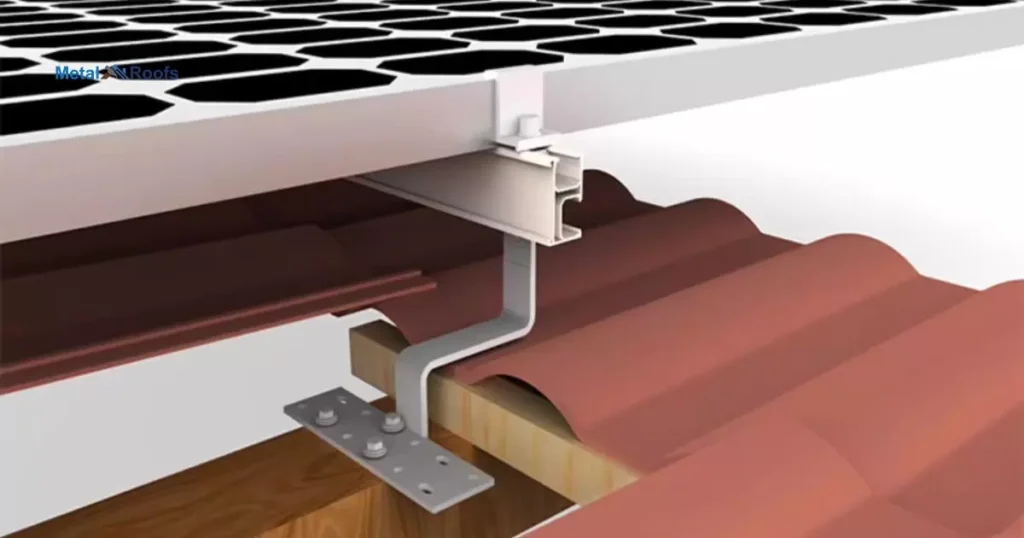
Quality fasteners are crucial for ensuring a durable and reliable metal roof. These fasteners hold the metal panels securely in place, preventing any potential noise caused by loose connections. High-quality screws and nails designed specifically for metal roofing are essential for optimal sound-dampening performance.
Using the right fasteners also helps to maintain the integrity of the roof structure over time. When selecting fasteners, prioritize durability and compatibility with the metal roofing material to effectively minimize sound transmission and ensure long-term stability.
Additional Layers of Insulation
Layers of insulation play a crucial role in reducing noise transmission through metal roofs. Adding insulation materials like fibreglass or foam boards beneath the metal panels, sound waves encounter resistance, dampening their impact.
This extra barrier effectively absorbs and blocks unwanted noise from entering or escaping the structure, creating a quieter indoor environment. Insulation also enhances thermal performance, contributing to energy efficiency and comfort.
Noise-Reducing Underlayments
Noise-reducing underlayments are essential for minimizing sound transmission through metal roofs. These underlayments act as a barrier between the metal panels and the interior space, absorbing and dampening noises such as raindrops or footsteps.
They are typically made of materials like rubber or foam, specifically designed to mitigate sound effectively. Installing noise-reducing underlayments beneath a metal roof can significantly improve indoor comfort by reducing unwanted noise levels.
Sound Deadening Paint For Metal Roof
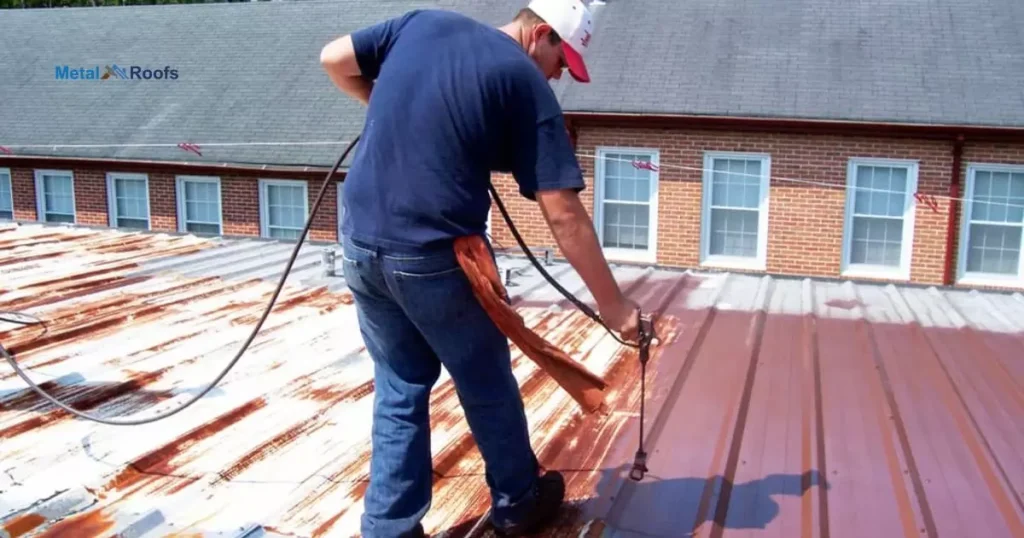
Sound-deadening paint for metal roofs offers a practical solution to reduce noise disturbances. Applied directly onto the metal surface, this specialized paint absorbs sound waves, diminishing reverberations.
Its thick formula acts as a barrier, preventing noise from penetrating through the roof into the interior spaces. The application process is straightforward, making it a cost-effective option for soundproofing metal roofs.
Once applied, the paint dries quickly, forming a durable layer that effectively dampens sound vibrations. Homeowners can enjoy a quieter indoor environment, free from the disruptions caused by rain, hail, or other external noises.
Frequently Asked Questions
Can you soundproof a metal roof?
Yes, you can soundproof a metal roof effectively using sound-deadening paint.
How can I make my metal roof less loud?
Applying sound-deadening paint to your metal roof is a simple and effective solution for reducing noise levels.
How do you deaden the sound of a metal roof?
You can deaden the sound of a metal roof by applying sound-deadening paint directly onto the metal surface.
Conclusion
In conclusion, metal roof sound-dampening techniques offer effective solutions for noise reduction. From insulation materials to soundproofing paints, homeowners have various options to choose from.
These methods not only enhance comfort but also promote a peaceful indoor environment. Addressing noise issues, metal roofs can become more enjoyable and functional spaces for occupants.
